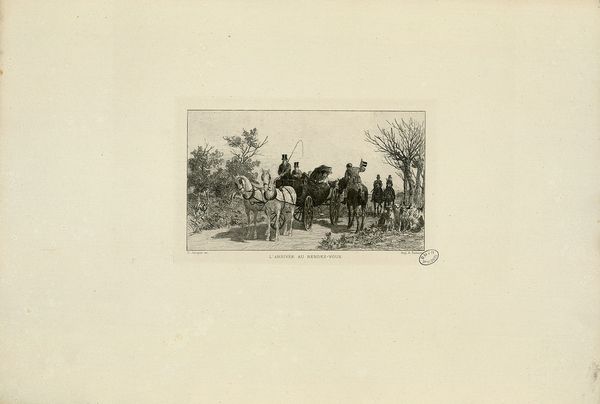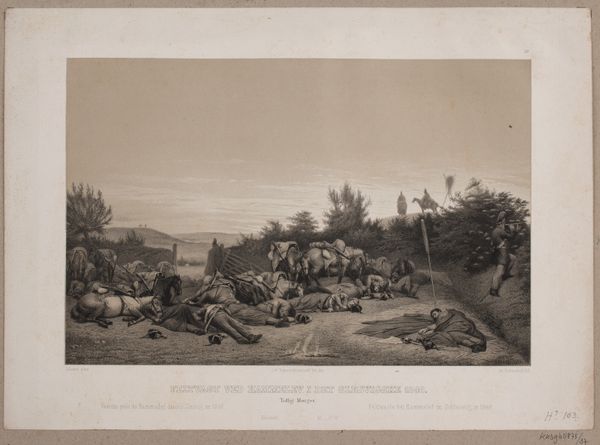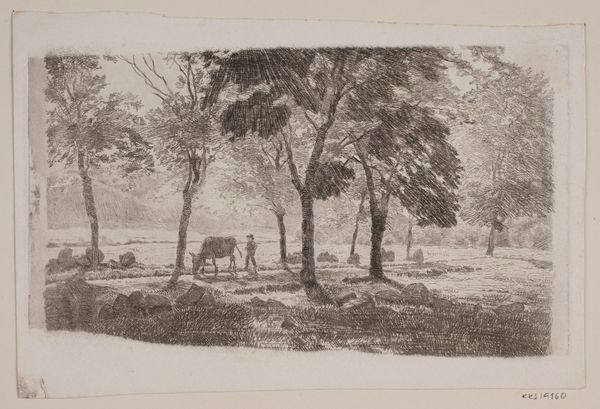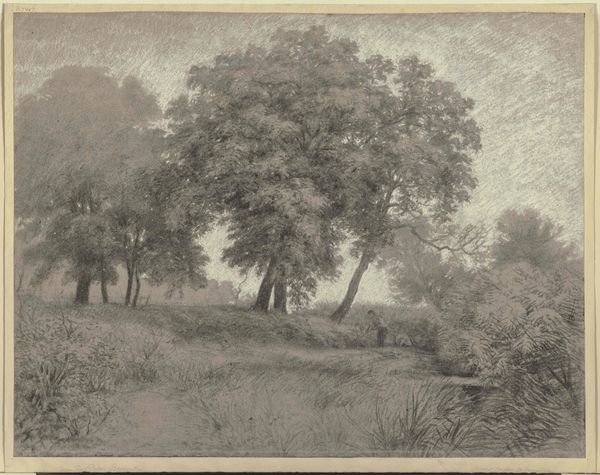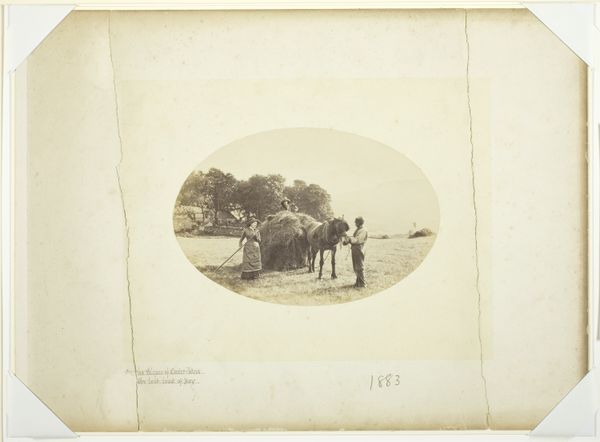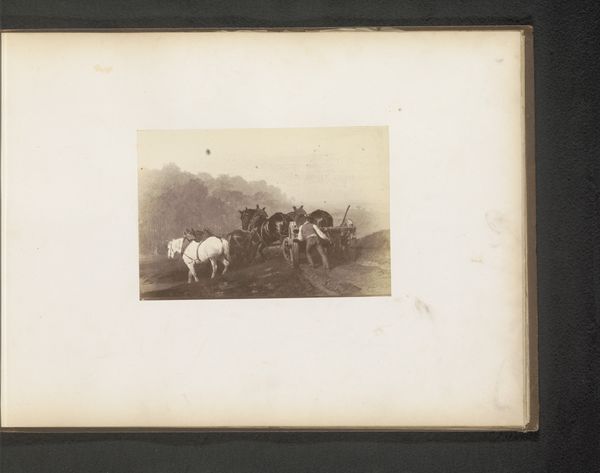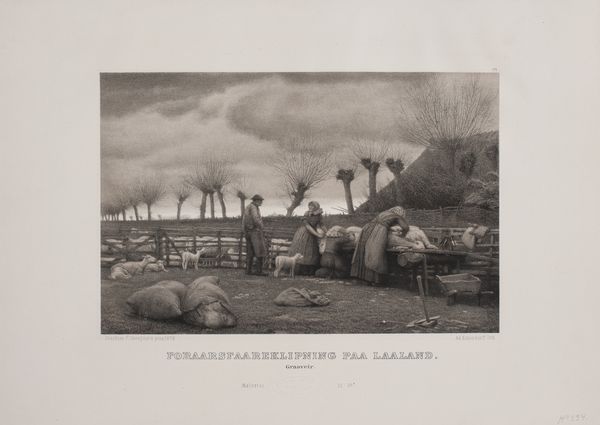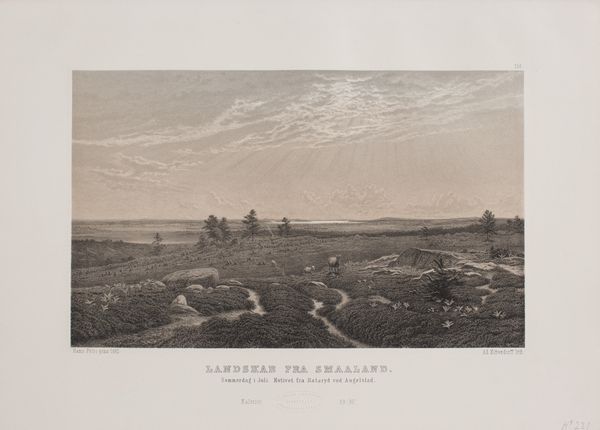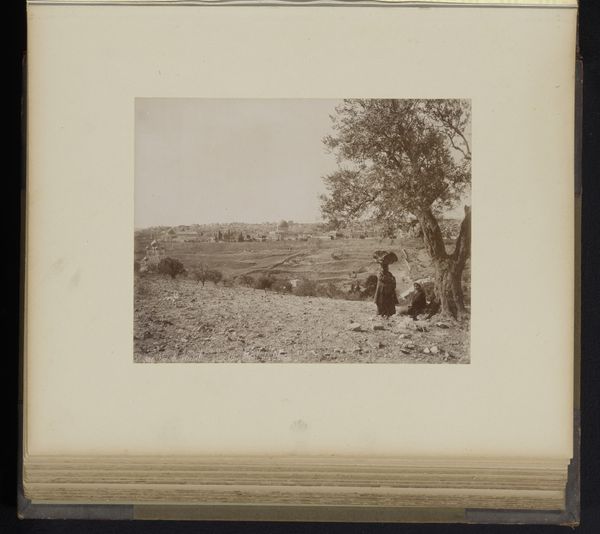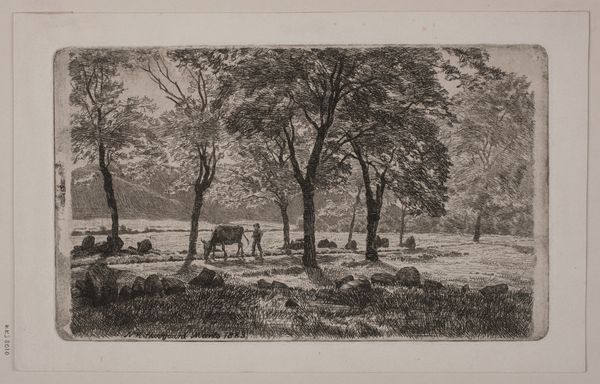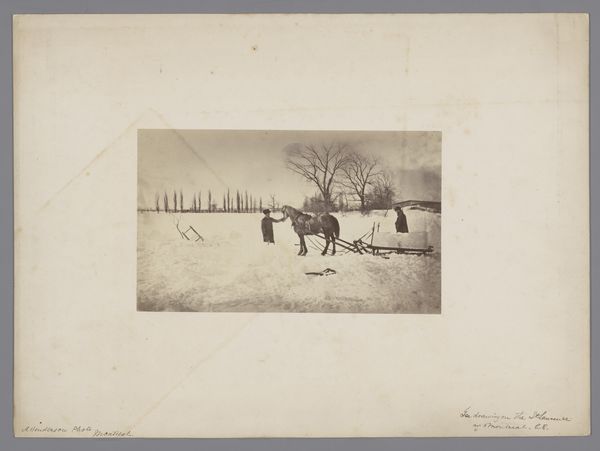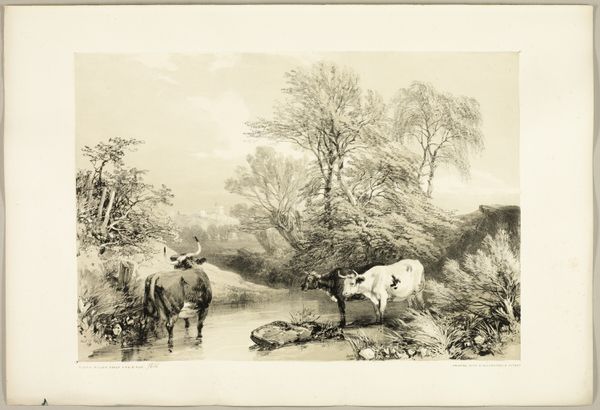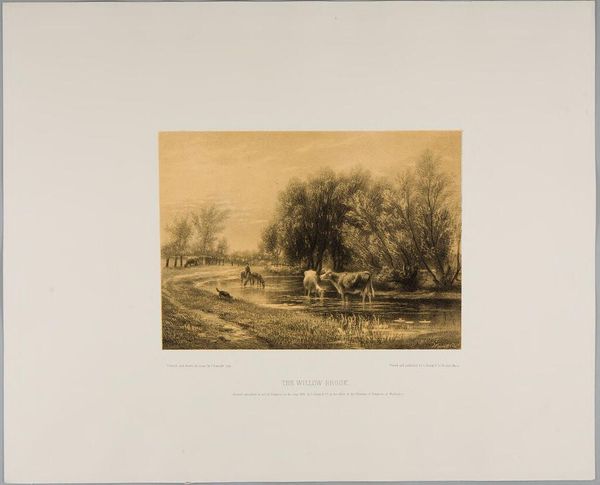
Fåreflokken drives hjem om aftenen over marken med oliventræer 1880s
lithograph, print, etching
lithograph
etching
landscape
realism
Dimensions: 285 mm (height) x 401 mm (width) (billedmaal)
Curator: Here we have "Fåreflokken drives hjem om aftenen over marken med oliventræer", dating from the 1880s by Adolph Kittendorff. The piece combines lithograph, etching, and print techniques. My first impression is its quiet stillness, that melancholic rural charm of Northern European art. What strikes you about it? Editor: This image certainly evokes a mood, but I also see a careful construction of an idealised pastoral scene. I'm struck by how Kittendorff depicts labor and landscape – the labourer women are there as figures, almost decorative components. The labour is erased and the hierarchy of the period between humans and non-human is presented as a peaceful unity. It speaks to how power relations and even exploitation, particularly concerning gendered labour and environmental harmony, get softened. Curator: That’s a critical reading, certainly. What’s interesting to me is how Kittendorff’s artistic journey aligns with the growing popularity of landscape painting and the associated nationalist sentiment of that time. Pieces such as these helped to create an ideal of nature closely related to nation and nationality in European artistic and social contexts. Editor: Absolutely. The landscape, rendered with such meticulous detail in the print, becomes a symbolic terrain. The sheep, the olive trees – they are imbued with meaning. Olive groves in particular have deep, complicated colonial and cultural significance with its production and extraction intimately intertwined with the power structures of the period. And beyond nationalism, don’t forget the lens through which images were seen at that time—one of race, class, and colonial outlooks of artists of the period. Curator: Of course. It's vital to consider how these images circulated, especially as prints—how they were consumed and shaped the European gaze. We shouldn't separate artistic movements from this social reality. Editor: Precisely. By unpacking these nuances, we start to see the print not merely as a pretty picture, but as a lens reflecting and refracting power. Curator: Well said, revealing hidden layers within what at first seems like a simple scene. Editor: It certainly reminds us that the visual world is always so very politically charged.
Comments
No comments
Be the first to comment and join the conversation on the ultimate creative platform.
